LG G Flex Review - Camera and Video Review
Camera and Video
You can sit on it but you probably won't want to

Sections
- Page 1 LG G Flex Review
- Page 2 Design and Self-healing Back Review
- Page 3 Screen Quality Review
- Page 4 Software, Performance and Interface Review
- Page 5 Camera and Video Review
- Page 6 Battery Life, Call Quality and Verdict Review
LG G Flex: Camera
The LG G Flex does not have a brand new or dramatically interesting camera. However, most of its specs are in-line with the fairly high-end LG G2, even if its real priorities are elsewhere.
It has a 13-megapixel 1/3.2-inch main sensor and an f/2.4 lens. However, the G Flex does not have the optical image stabilisation that set the LG G2 apart from its rivals last year. Its single-LED flash looks more-or-less identical to the G2’s, aside from having a square housing rather than a round one.
Finally, its lens has a focal length equivalent to 35mm, a smidge less wide than the 33mm of the iPhone 5S.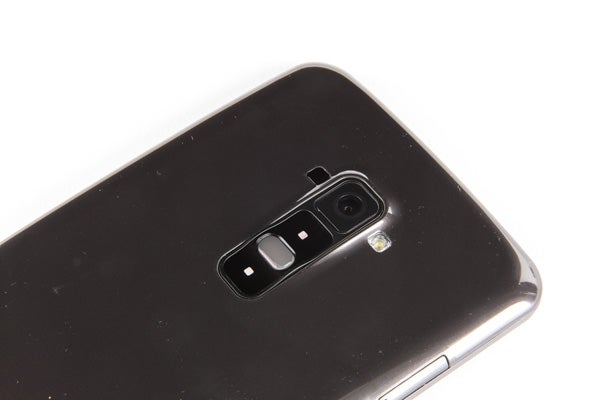
Camera App and Shooting Performance
The LG G Flex doesn’t try to do anything too clever with its camera app. There are controls on the left side of the screen, controls on the right and nothing essential in the middle, letting you handle everything with a pair of thumbs.
In Samsung Galaxy S4 fashion, there are quite a few extra modes as well as the basics, including dual-camera (back and front) shooting and one that merges multiple exposures in a single shot for dramatic-looking action photos. However, the phone doesn’t inundate you with the things. It’s mostly pretty easy to use, and there’s the standard touch focusing on offer as well as 9-point autofocus should you press the virtual shutter without ‘manually’ focusing.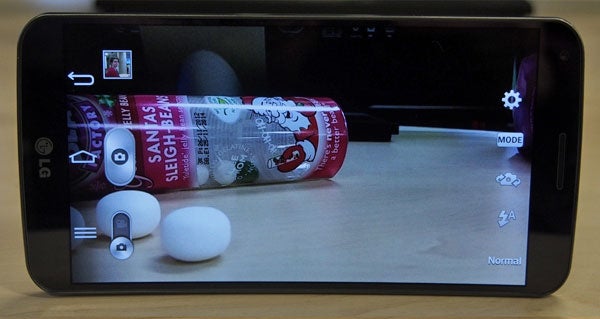
Here’s the camera app in action
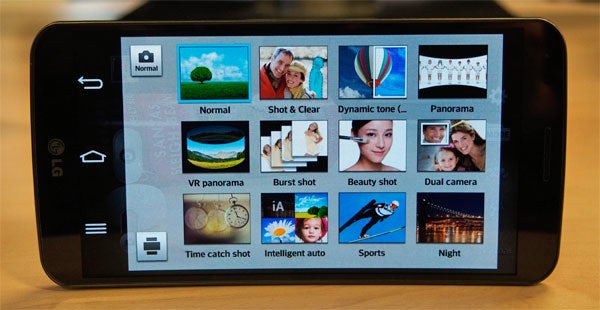
…and here’s the mode selection screen
Shooting speed in daylight is great. Once the G Flex has focused, shot-to-shot speeds are very fast, even without using the burst mode. It slows down a little at night time – distinctly slower than the iPhone 5S – however, it’s still pretty snappy. It’s nothing like as slow as the Nexus 5 was at release.
However, we did encounter some problems with focusing. When shooting people, or reasonably close-up subjects, the G Flex would often seemingly mis-report being locked on when the results would often show at best a very soft focus – and that’s being charitable. If it’s not a pure focusing issue, we’re not convinced the camera system has been altered enough in terms of its shutter speed management to compensate for the loss of optical image stabilisation.
With OIS, slightly longer exposure times can be used without resulting in blur from hand judder. The sort of image softening we saw in indoors shots could easily be a result of using longer exposure times without having stabilisation.
Detail, Exposure and Colour
General photo performance is quite good. In the right conditions image sharpness is excellent – around the same level as the Samsung Galaxy S4. Colour saturation is sound and good levels of contrast lead to punchy-looking, vibrant photos.
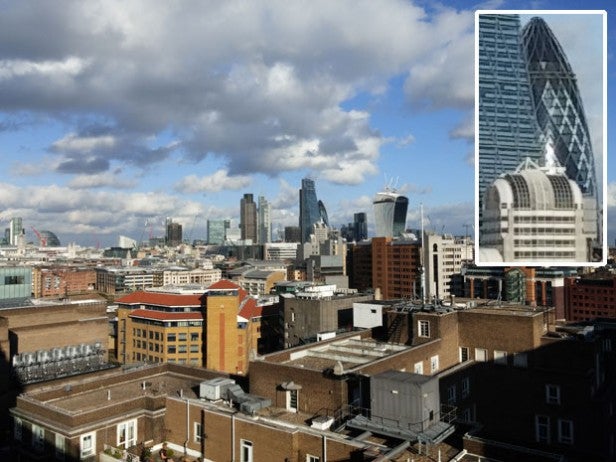
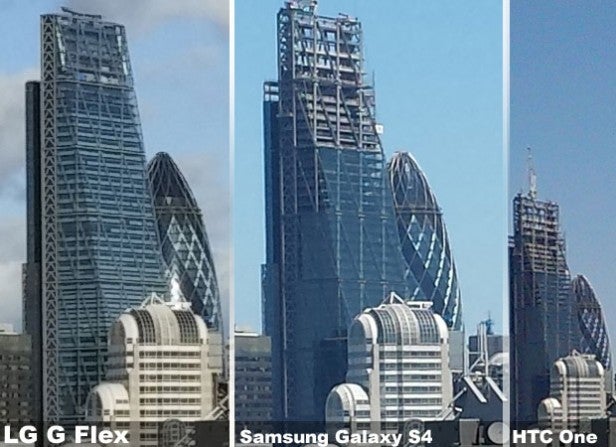
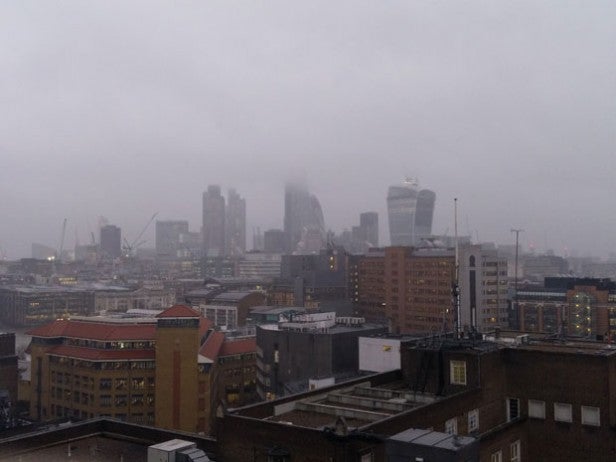
Even in dreadful daytime conditions, contrast and colour are acceptable
Low-light shooting
The G Flex has its own night mode designed to let you take low-light photos without having to use the flash. It does a pretty good job, too.
Although it uses some pretty serious noise reduction processing, the results stop short of looking truly plasticky. They do get close, though. Zoom into them and you can easily see where definition has been sacrificed in order to make the shots look vaguely clean, but for sharing over social networks rather than printing out at A4 size, the results aren’t too bad at all.
However, it’s here that you feel the loss of optical image stabilisation. We’d expect better sharpness and separation between objects if the phone had kept hold of OIS.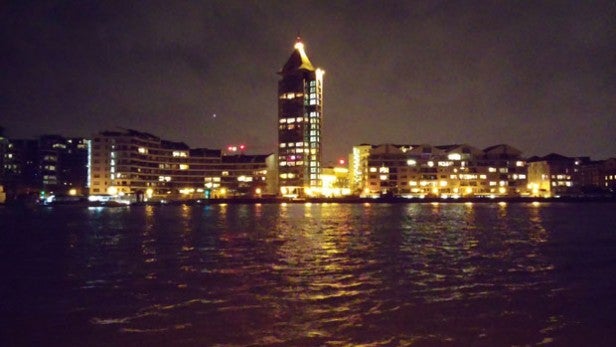
Show with Night mode – The sky is noisy and there’s plenty of light bloom, but the G Flex has held onto its colour saturation.
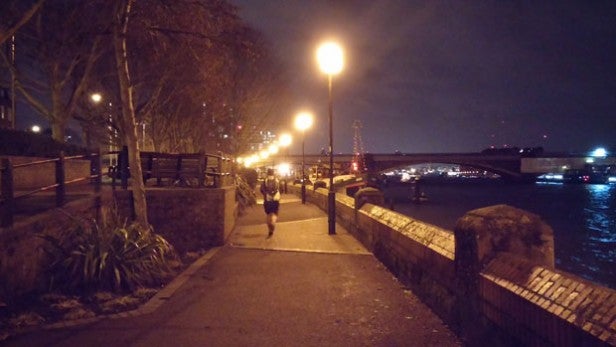


Shot with Night mode
This shot shows the G Flex at its most plasticky. Although low on noise, the photo is overly smoothed-out. However, it’ll do for Facebook.
HDR
HDR is becoming a standard tool in the arsenal of any mobile phone photographer. And the LG G Flex has its own HDR mode. It merges a couple of shots taken with different exposure settings to give you better detail – especially when there’s a strong light source in the shot.
The G Flex’s HDR mode works, but is not the best we’ve seen in recent times. Its focus seems to be solely on increasing shadow detail. However, this often decreases contrast significantly too, lowering contrast.
The best HDR modes make photos punchier, but this one doesn’t. Or at least doesn’t always. We also found our HDR shots were often a good deal softer than the ‘normal’ shots. As with our other focus complaints, this could be put down to the loss of optical image stabilisation, and the G Flex not fully taking this into account.
Here are some HDR demos:
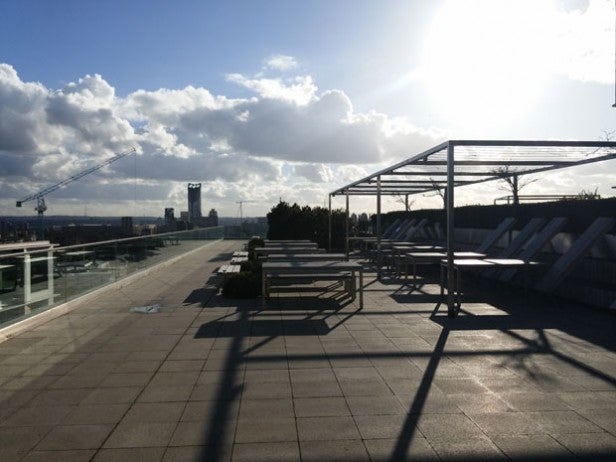
HDR mode off
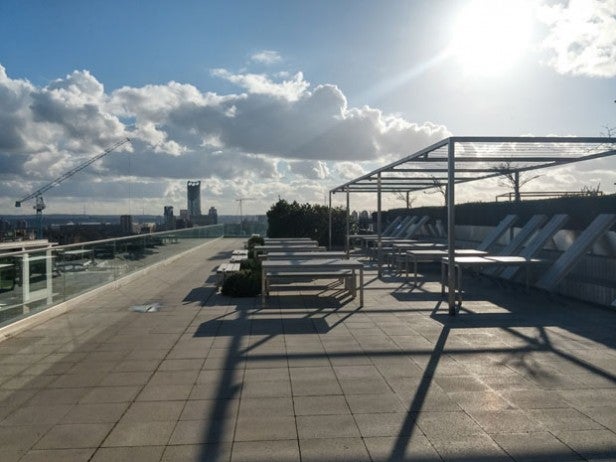
HDR mode on
Although the G Flex fares pretty well without HDR, the mode significantly increases shadow detail and reduces the flare/bloom effect of the sun.

However, as you can see from this 1:1 pixel crop, sharpness decreases significantly.
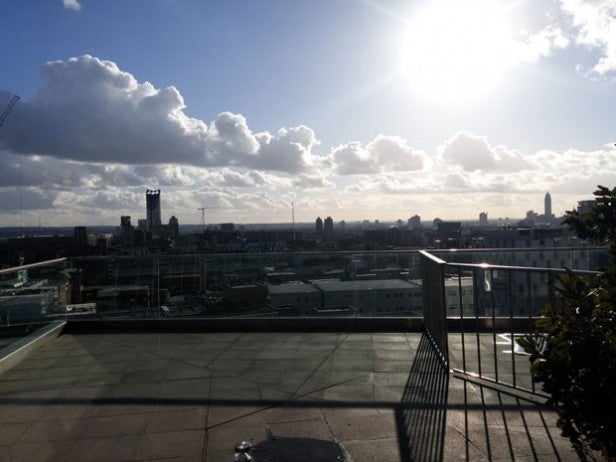
HDR mode off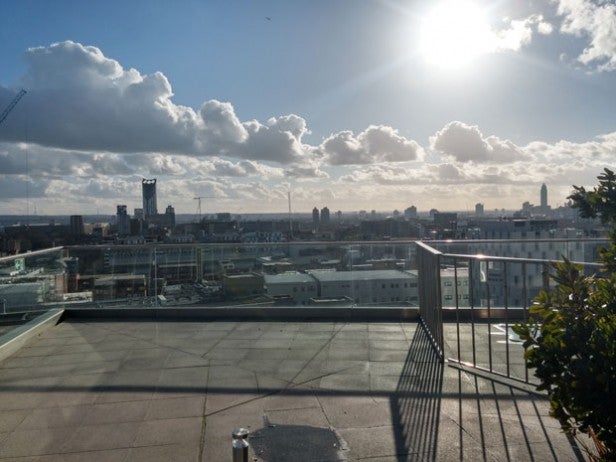
HDR mode on
Once again, the G Flex performs well without HDR, but the mode brings a more dramatic look to the clouds.
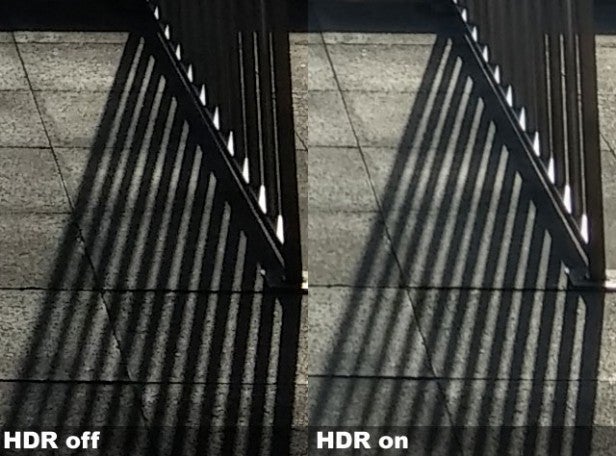
Once again, though, sharpness takes a hit. However, it’s less prominent this time around.
Macro
Its camera has issues, but we’re pretty impressed by the macro skills of the LG G Flex. The combination of a sharp lens, 35mm focal length and an unusually close focusing range mean it’s great for close-ups. You can get as close as about 7cm and maintain focus.
However, you do need a steady hand, and need to be a little suspicious of the G Flex’s green ‘I’m in focus’ reticule.

Video
The G Flex’s video capture offers reams of features. Most impressive of the lot of 4K video shooting – that’s at 3,840 x 2,160 resolution rather than 1,920 x 1,080 pixels of Full HD.
There’s also live face distortion effects, dual recording (both cameras) and a rather unusual mode called ‘tracking zoom’. This uses a box-out that shows a zoomed-in portion of the screen, and you can pick which bit. You can have a lot of fun with the LG G Flex camera.
The only bit we miss is a true high-speed shooting mode. The G Flex has a 60fps 1080p video shooting mode, but 120fps is what provides a real ultra-slow-down effect.
How we test phones
We test every mobile phone we review thoroughly. We use industry standard tests to compare features properly and we use the phone as our main device over the review period. We’ll always tell you what we find and we never, ever, accept money to review a product.


